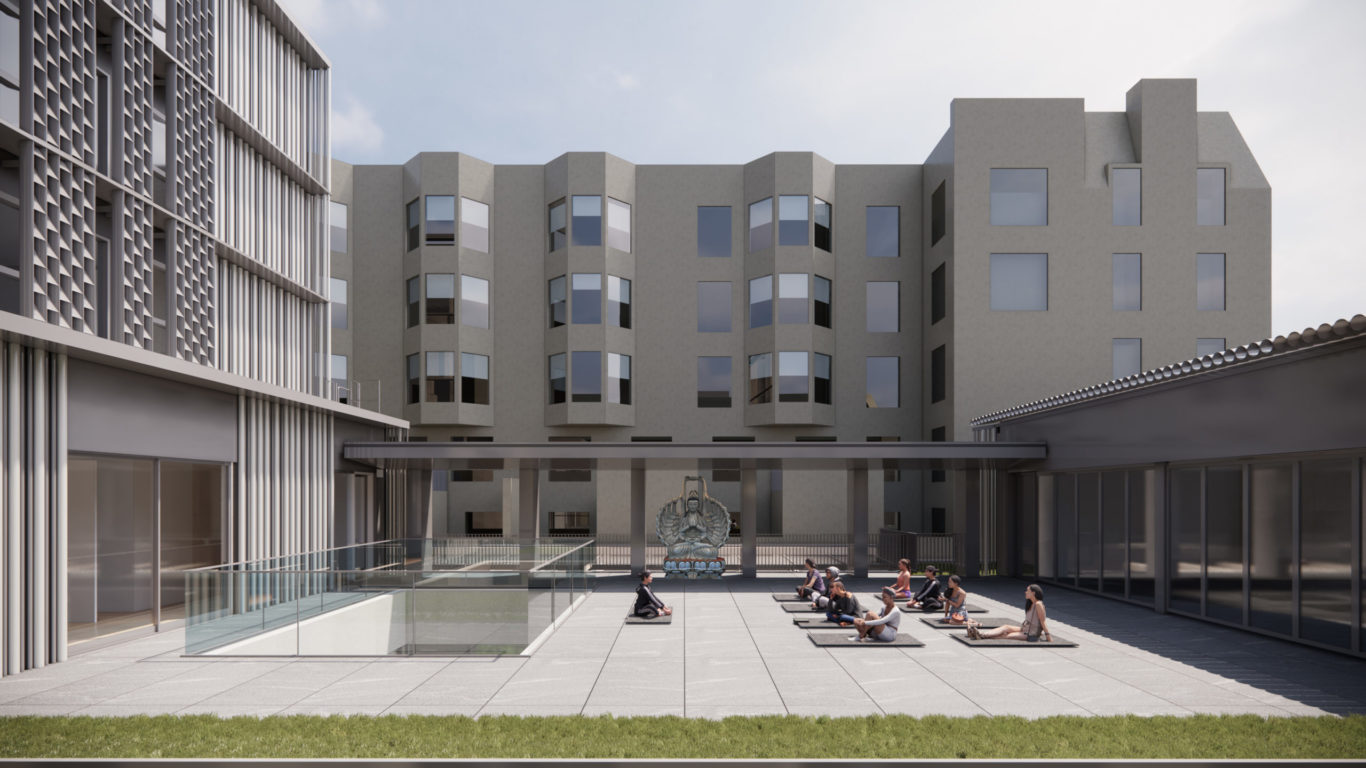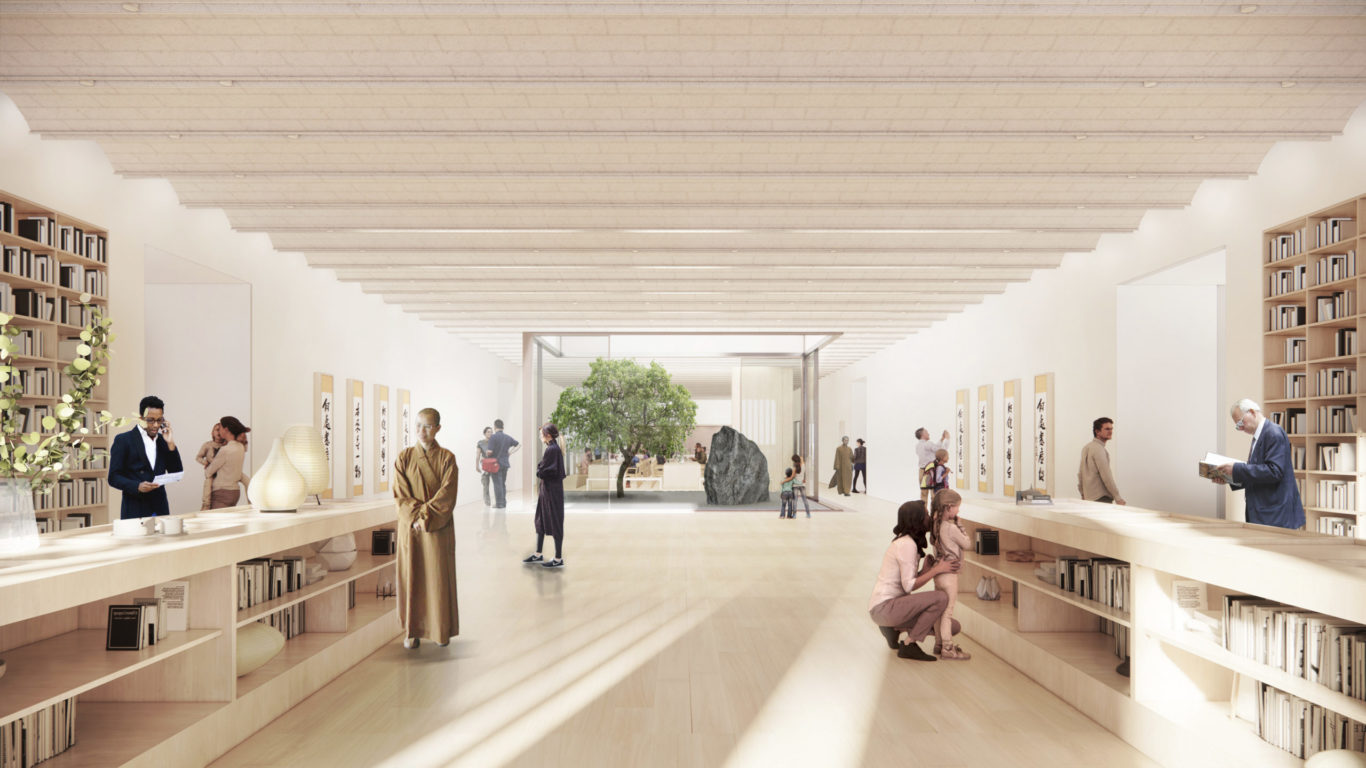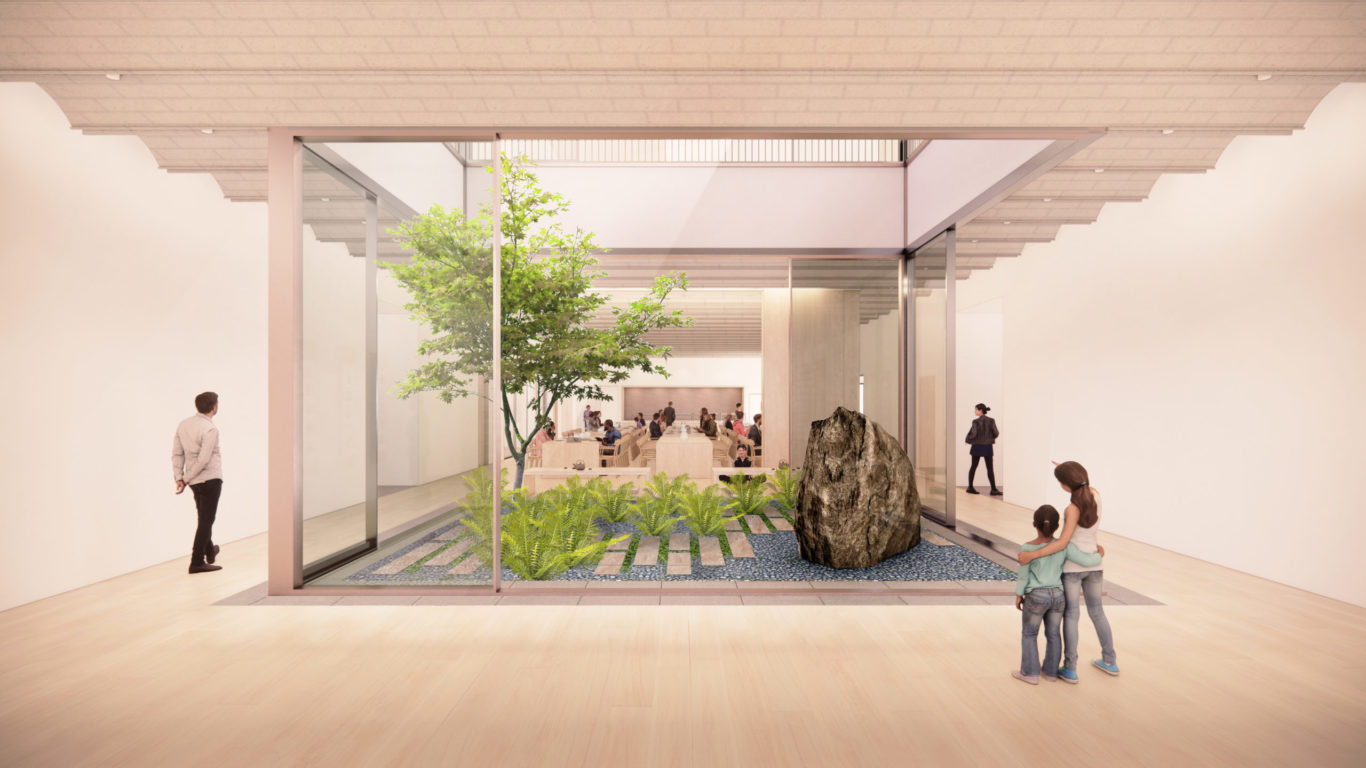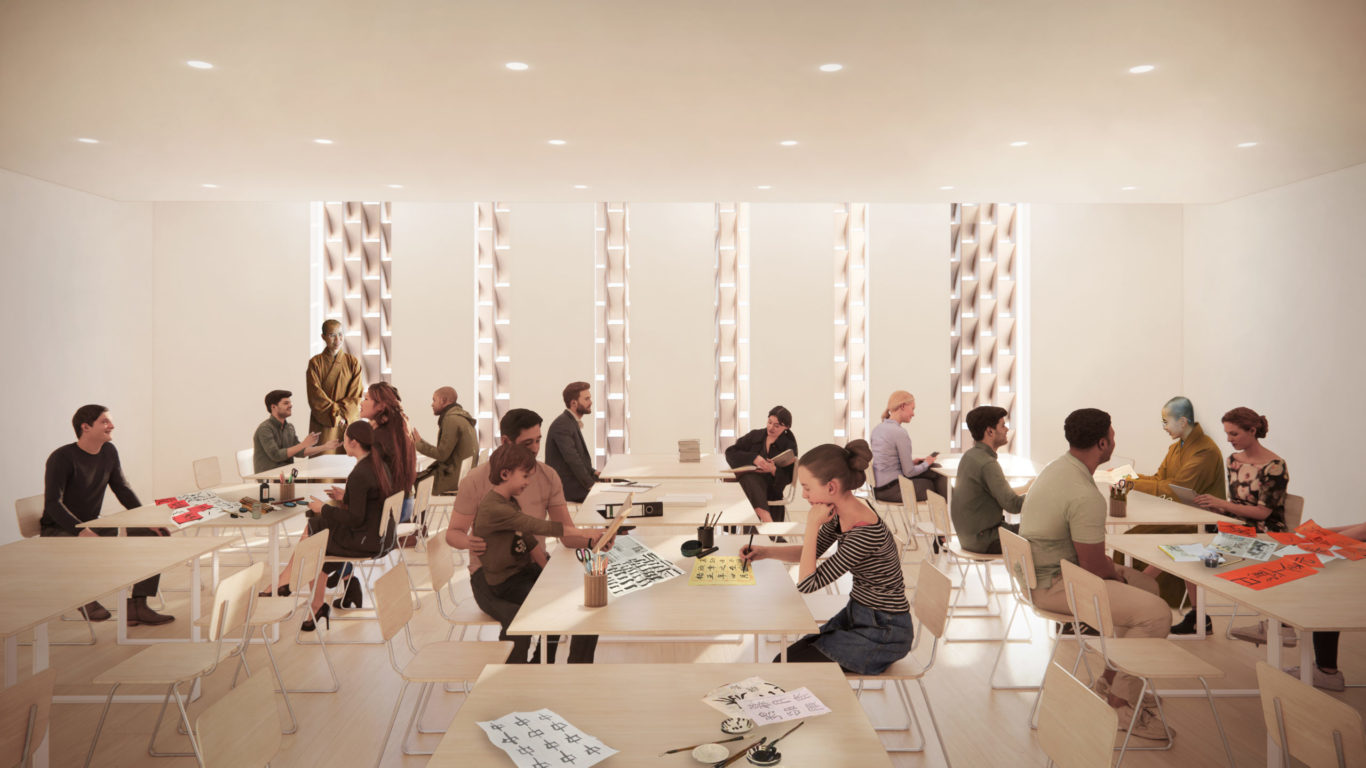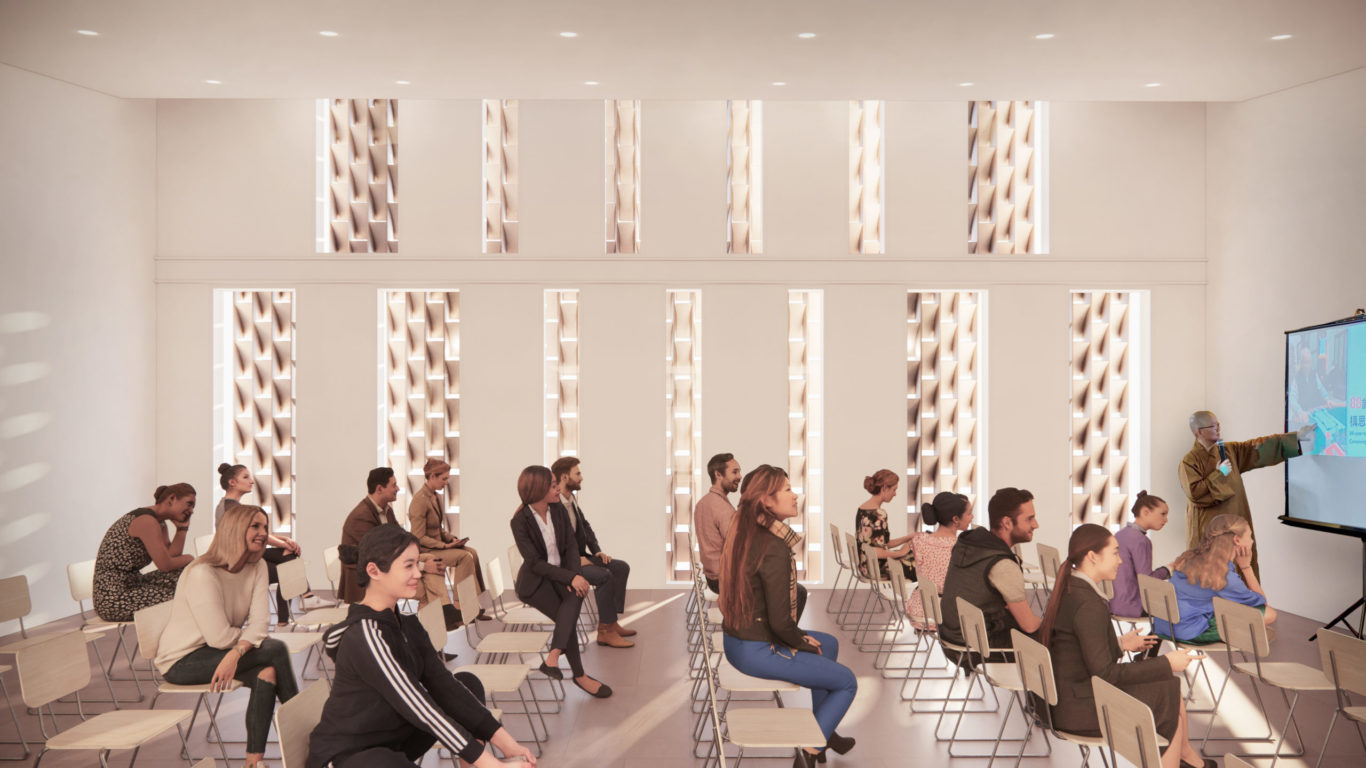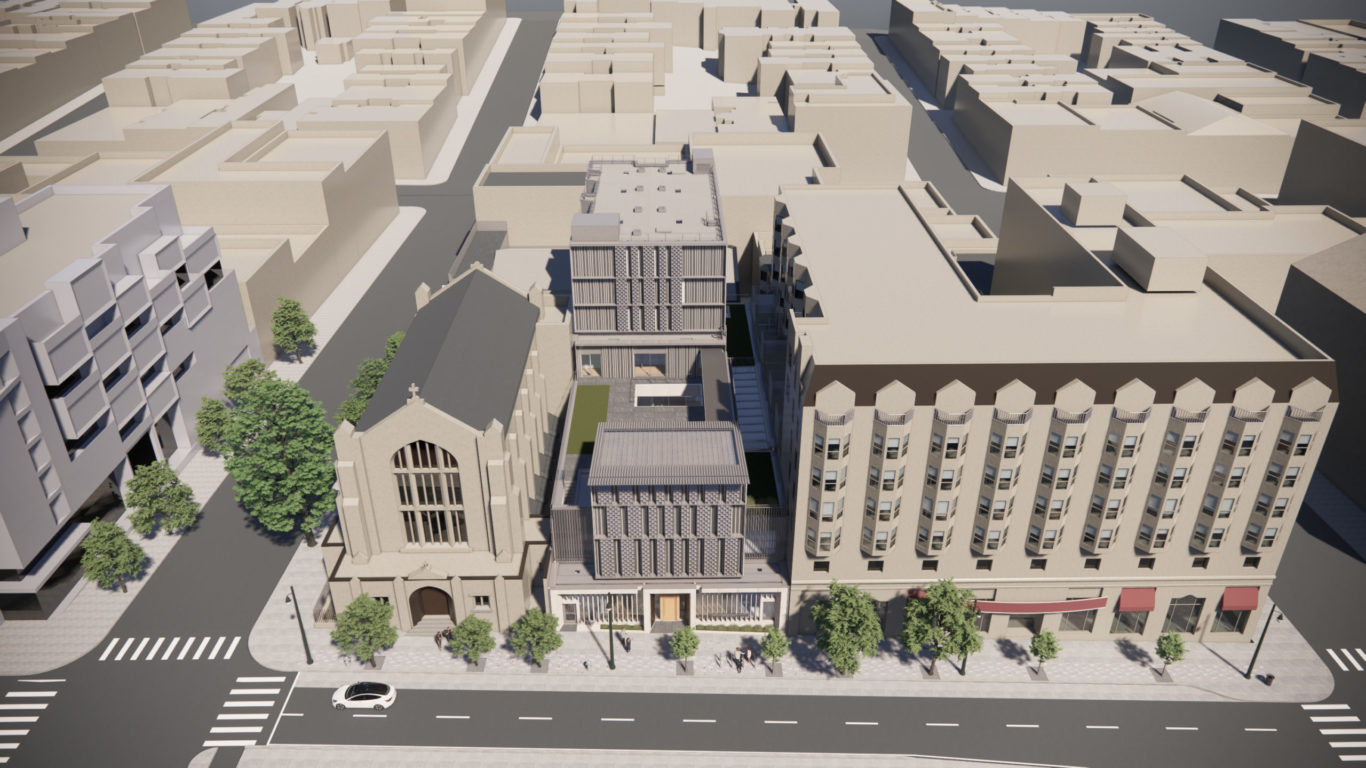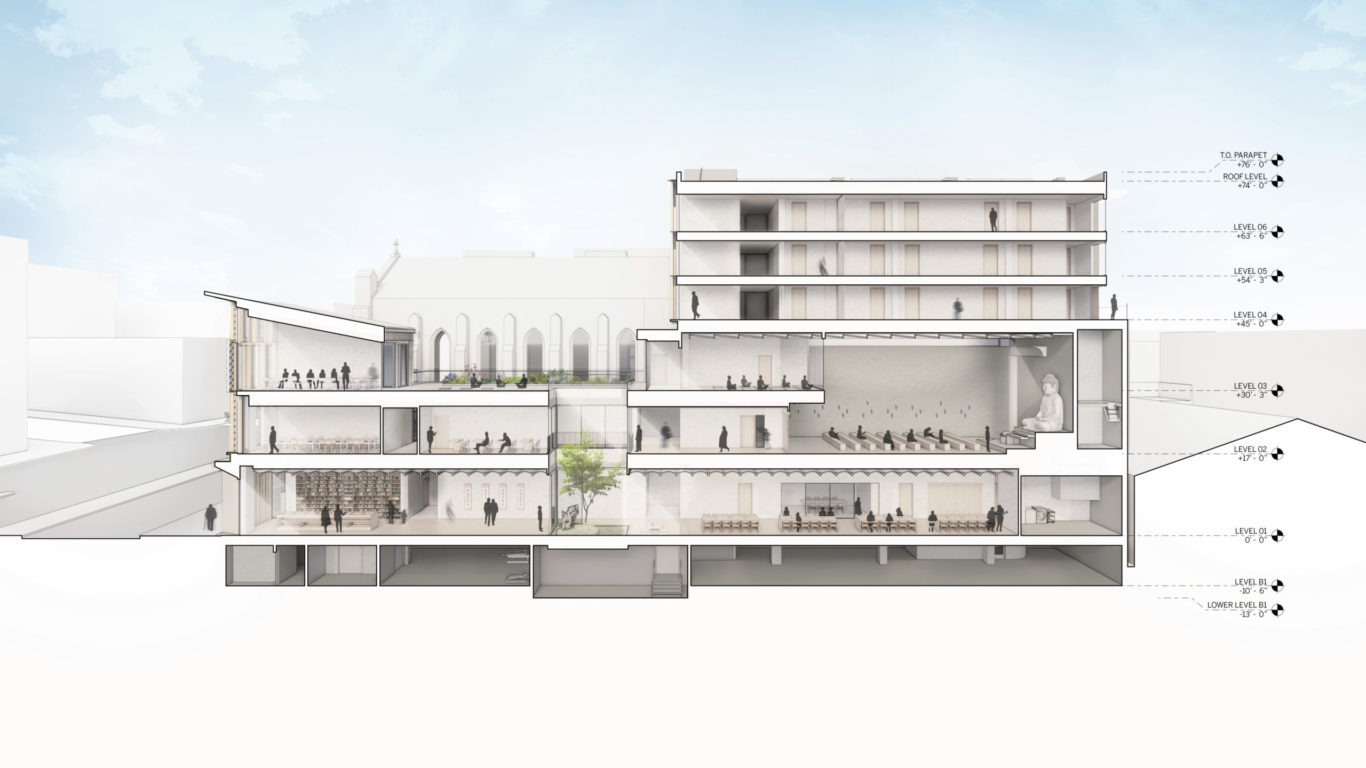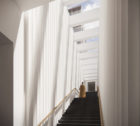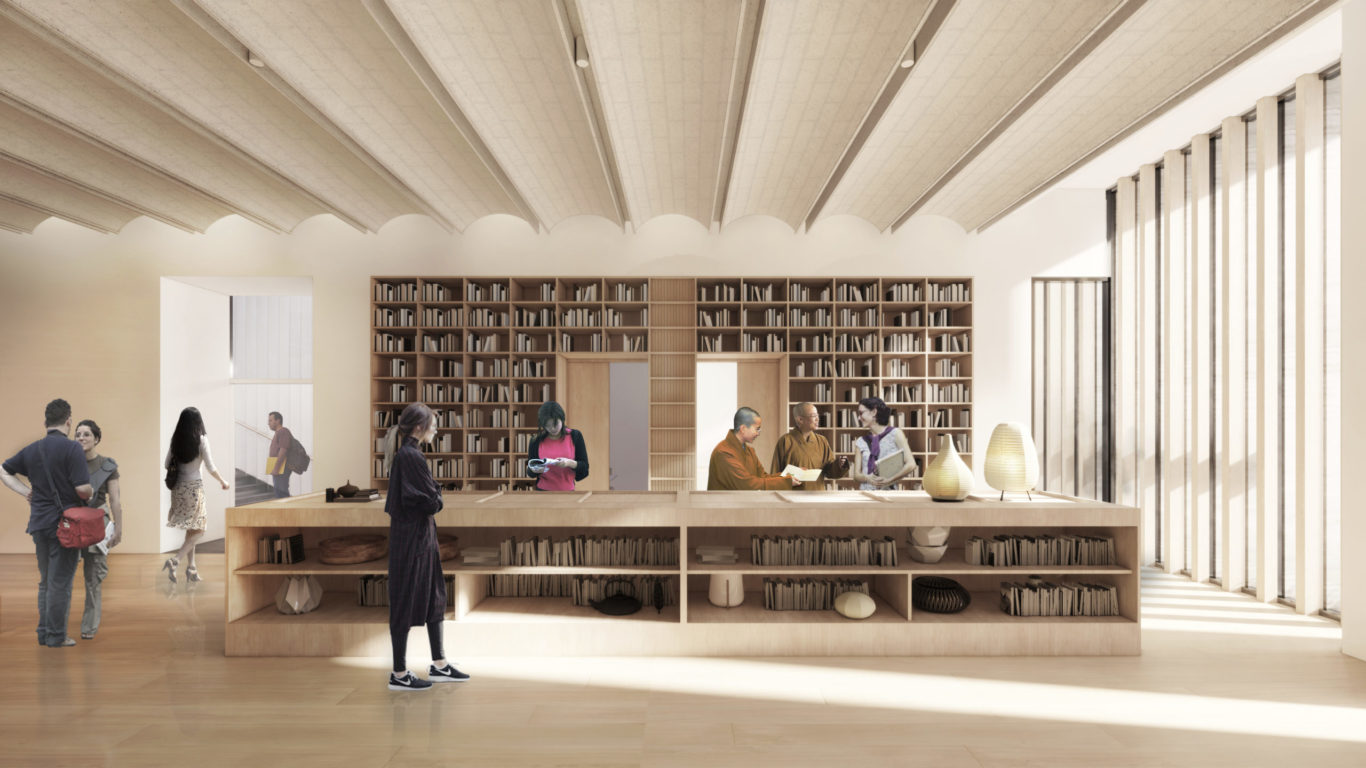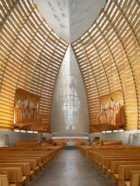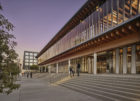A center for community life
Since 1989, the American Buddhist Cultural Society (ABCS) Temple, a modest, single-story facility on San Francisco’s Van Ness Avenue, has been a center of spiritual education, cultural exchange, charity and community life. The new six-story temple will support ABCS’s programming, and accommodate its growing role as a focal point for Buddhists around the Bay Area.

The upgraded facility will welcome the public into a contiguous space with vaulted ceiling panels that will host a bookstore, art gallery, tea house, and community dining hall. A central atrium will bring natural light into these spaces, and the small interior garden at its base will create an intentional pause between the gallery and the tea area.
On the upper levels, the Buddhist shrine and meditation room will provide practitioners and the broader public with a retreat for contemplation. An education center, consisting of two classrooms and a lecture hall, will host community classes for children and adults. In support of these community-oriented spaces are three levels of private dormitories for visiting volunteers and monastics from the San Francisco Bay Area and around the world.
